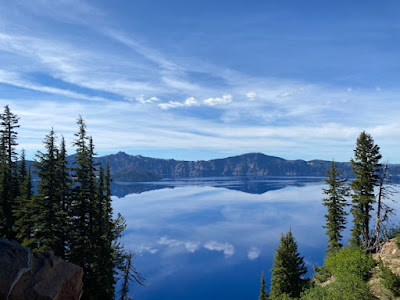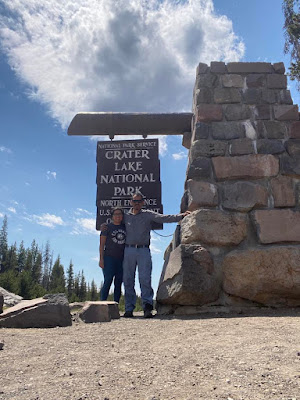Waves, Joan Sebastian, and Hemingway: A Central Coast Road Trip from L.A.
Reflections from a California road trip where literature and ballads collided in unexpected ways.
By Armando Ortiz
Last year, we drove to Carmel, about five hours north of Los Angeles. Our route took us along the I-5 north, cutting west on Highway 46 before stopping for lunch in Paso Robles. There, we found a small Mexican restaurant frequented by locals. We took it to go and enjoyed it at a nearby park. From there, we continued north on the 101 until we reached the coast. Our first stop was the 17–Mile Drive, a picturesque stretch of road that hugs the Pacific.
At one of the first turnouts, Huckleberry Hill, I learned that John Steinbeck, author of Tortilla Flats, Cannery Row and Grapes of Wrath, used to frequent this part of the coast. It’s easy to see why–the crashing waves, the cypress trees, the feeling of solitude. It’s the kind of place that invites introspection and inspiration.
To bridge our musical taste–mine rooted in hip-hop and Yeny’s hard rock–we tuned in to a Spanish-language radio station. The playlist moved between old and new regional Mexican music. As the car wound through along the coast, we listened to tracks by Juan Gabriel, José José, Enrique Iglesias and Alejandra Guzman. The music felt both nostalgic and refreshing, almost like the cool onshore breeze that blew in through the open windows.
Driving through this short stretch of coast was magical–the pounding surf, the manicured golf lawns and elegant homes facing west. This was the perfect place to catch a sunset. We spent the day driving and stopping along the 17–Mile Drive, and later went to have dinner in Carmel. The spot we chose, The Hog’s Breath Inn, was once owned by Clint Eastwood. It turns out he had also been mayor of this small town.
While in Carmel, I heard music that I hadn’t given much thought to before–especially the songs of Joan Sebastian. The next day, we explored the town by foot, enjoying ice cream, window shopping, and other sweets. We ended our time there with lunch at Flaherty’s Seafood Grill and some homemade bread to take with us from Patisserie Boissiere Restaurant.
I’d probably heard five different tracks by Joan Sebastian during our trip. So, upon returning to L.A., I began diving into his catalog. At that time, I was reading Hemingway’s A Movable Feast. Somewhere along the way, the Spanish lyrics began to blend with the author’s voice on the page.
I had just finished reading the part where Hemingway confesses to cheating on his wife. He describes the regret that followed, and how during the affair, he was conflicted. Right then, Joan Sebastian’s Lobo Domesticado began to play–a song about a man who can’t be tamed but wants to be domesticated by the woman he loves.
Another song followed: Sé que no merezco tu perdón. It echoed the passage I’d just read, where the singer admits his faults were serious, his mistakes were too severe. He knows she’ll find someone new. Similarly, Hemingway, while regretful, finds a kind of relief that Hadley, his ex-wife, married someone finer than him. As that song ended, Me Gustas began–Sebastian singing about loving a woman so deeply that being with her erases time and reason. The country twang and crying fiddle paired beautifully with Hemingway’s sense of longing and loss.
I kept reading, and soon Hemingway was reflecting on Paris and his time in the winter mountains with Hadley. The tone of writing felt perfectly in sync with Sebastian’s songs. One scene, where Hemingway hikes up the mountain, made me feel like I’d climbed three thousand feet in fifteen minutes. The timing of the music I was listening to felt uncannily aligned with the words on the page.
Eventually, the track switched to Oiga, a duet with Prisma, who sings of her fear of love after being hurt. Near the end of the book, Hemingway reflects on human behavior–how actions have consequences, how even our most secret choices shape our futures. But at least, he says, he’s glad Hadley found a better man. Some of those songs, which I kept returning to, echoed Hemingway’s own regrets and longing.
Life unfolds in unexpected ways–and sometimes, the art we encounter along the way helps us understand it. Our trip to Carmel was peaceful: we had good meals, shared desserts, and listened to songs that still linger in my mind. But what stays with me most is how all these elements–the coast, the music, the drive–came together to make A Movable Feast not just a book I read, but something I felt in real time. A layered, living experience.
























